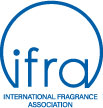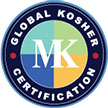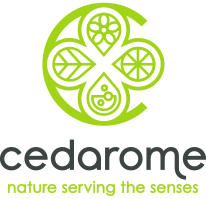Description
Basil Chavicol is extracted from the leaves and stems of the Ocimum Basilicum through steam distillation.
Olfactive Profile
Fresh, herbaceous and spicy
Appearance
Clear or pale yellow
- Details
- Technical Information
- Downloads
- Sources
Details
Botany
Basil chavicol is an annual herbaceous plant that belongs to the Lamiaceae family and grows between 30-60 cm (12-24 inches) in height. It has broad, dark and green oval-shaped leaves, and white or pale purple flowers that appear in spikes.
Ethnobotany
Basil Chavicol is a native plant from the tropical regions of Asia. It has been cultivated for thousands of years, primarily utilized for traditional medicine and culinary purposes.
Uses/Application
Basil Chavicol is used in flavor, aromatherapy, cosmetics and fine fragrance [1].
Technical Information
CAS: 8015-73-4
INCI: OCIMUM BASILICUM (BASIL) OIL
FEMA: 2119
EC: 283-900-8
Botanical name: Ocimum basilicum
Botanical family: Lamiaceae
Accepted synonyms: Ocimum basilicum var. thyrsiflora, Ocimum amplexicaule
Common name: Sweet Basil
Origin: Vietnam
Cultivation method: Plantation
Harvest period: June to September
Plant part used: Leaves and stems
Method of extraction: Steam distillation
Main components: Chavicol, Eugenol, Methyl Eugenol, Linalool, Methyl chavicol, Cineol, Camphor [2, 3].
Certifications and Declarations:



Certificate of Analysis
- SDS
- Food Grade
- Natural Statement
- Origin Statement
- GMO Free
- Allergen
- Prop 65
Downloads
Sources
[1]. Qing X. Li, Chiou L. Chang, Basil (Ocimum basilicum L.) Oils In: Victor R. Preedy (Editor) Essential Oils in Food Preservation, Flavor and Safety, AP, Elsevier 2016.
[2]. Rajesh K. Joshi, Chemical composition and antimicrobial activity of the essential oil of Ocimum
basilicum L. (sweet basil) from Western Ghats of North West Karnataka, India, Ancient Science of Life / Jan-Mar 2014 / Vol 33 / Issue 3, p. 151 – 156.
[3]. Arpi Avetisyan, Anahit Markosian, Margarit Petrosyan, Naira Sahakyan, Anush Babayan, Samvel Aloyan and Armen Trchounian Chemical composition and some biological activities of the essential oils from basil Ocimum different cultivars, BMC Complementary and Alternative Medicine (2017) 17:60



